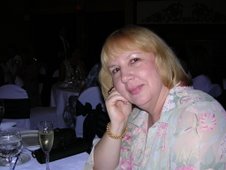It did something truly unbelievable in Damascus today—IT RAINED AGAIN, but not enough to slow us down. We went first to the National Museum of Syria and saw among many other things, one of the major archeological finds of the last century, a small clay carving of the Ugaritic alphabet, giving archeologists and historians insight into the language and history of Syria, and thus, civilization.
We left Damascus and took a one-hour drive to the scenic mountain village of Maaloula. The Greek Orthodox Church of St. Sergis sits on top of the mountain overlooking the village. The church was constructed in the 4th century AD and is the oldest active Christian church. Maaloula is one of the few areas where Aramaic is still spoken. A woman from the St. Sergis church quietly said the Lord’s Prayer for our group. There was something very special about sitting in the oldest Christian church and hearing for the first time in my life the Lord’s Prayer spoken in the language of its first utterance.
The other important site in Maaloula is the Monastery of St. Thecla, who was a student of St. Paul’s and a female apostle according to the Coptic tradition. The monastery, which is carved into the side of the mountain, was constructed in the 1st century AD and is now the home of a Covenant of St Thecla (nuns).
The elevation of Maaloula is 4800 above sea level. The views are magnificent. There are caves in the side of every mountain and the houses seem to be extensions of the caves into the modern era.















